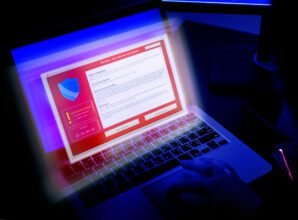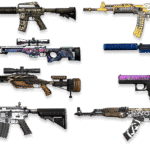Navigating Indoor Spaces: The Benefits of RTLS for Location Tracking
Real-time location tracking and identification (RTLS) is a system that monitors the whereabouts of people and things in the immediate region. In most RTLS systems, fixed reference points receive wireless signals from tags to establish their location after the tags have been connected to items or worn by humans. Vehicles on an assembly line, retail pallets in a warehouse, and hospital equipment are all potential applications for real-time location systems. Radiofrequency (RF) transmission is frequently used as the physical layer of RTLS technology.
In addition to or in instead of RF, some systems include optical (often infrared) or acoustic (typically ultrasonic) technology. Various conceivable technological configurations exist, as RTLS tags and fixed reference points can function as transmitters, receivers, or both.
In contrast to popular belief, real-time locating systems (RTLS) do not refer to global positioning systems or mobile phone tracking. Speed, direction, and spatial orientation are not typically part of location data.
Find out how RTLS solutions can help your manufacturing operations run more smoothly.
APPLICATIONS OF RTLS TRACKING
There are several applications for real-time location tracking systems. It has multiple applications in logistics, healthcare, security, and monitoring of people and property.
- By automatically tracking and timing the movement of people or assets through a process, RTLS can boost productivity. In addition, RTLS business intelligence can help visitors navigate their way around the building.
- Quicker and more precise accounting for all workers during emergency evacuations, less time spent storing handwritten reports and calling to identify staff and equipment, and shorter periods of quarantine after an epidemic of an infectious disease are all possible thanks to RTLS. Check out indoor asset tracking.
- Inventory management in warehouses or retailers is another popular application. Thanks to location tracking, businesses can more easily manage their inventory and ensure everything is where it should be.
- More efficiency and productivity can be achieved in the manufacturing industry by using RTLS to monitor tools and machinery, record output, and standardize procedures.
- The monitoring of human movement is another common application of RTLS tracking technology. Used for monitoring big groups of people and ensuring their safety at large events or in large buildings.
- It is easier to maintain order and ensure everyone’s safety if you always know where everyone is.
PROS OF RTLS TRACKING SYSTEM
![]()
Your company can be supercharged into a well-oiled machine with the help of RTLS for accurate indoor tracking. Technology may increase productivity, efficiency, and safety and acquire more precise and actionable data.
Gaining control of mobile assets, linking unpowered assets to your ERP system, real-time synchronization of actual production status with the production plan, and valuable insight into KPIs are all possible thanks to RTLS tracking technology. Other benefits include increasing labor productivity, eliminating search and idle times (such as locating vehicles in the car park), and the replacement of scanner, barcode, and paper/pencil processes.
Using RTLS tracking technology has numerous advantages for a company. Here are just a few examples:
- Increase output since you don’t have to waste time looking for items, and you can make better use of your resources because you know exactly where everything is.
- Improve security by taking preventative measures in the face of imminent danger with real-time location systems (RTLS).
- Improve your service to clients by using RTLS to monitor your most valuable assets and have them on hand whenever your clients require them.
- Save money – Increase your bottom line by adopting RTLS to reduce lost or stolen goods, minimize downtime, and optimize workflows.
WHY SHOULD YOU TRUST RTLS TRACKING TECHNOLOGY ABOVE OTHERS
Regarding keeping tabs on stock, RTLS technology is head and shoulders above the competition. This is why:
- Reliability – RTLS allows for pinpoint tracking of inventory within a building. Having this pinpoint knowledge about your inventory is essential.
- The simplicity of implementation: Real-time location tracking systems are made to be simple to implement.
- The RTLS system can be expanded or contracted easily to match your company’s growing or shrinking demands.
- Unlike other inventory tracking methods, RTLS systems require no specialized setup or costly gear.
- Consistently accurate and up-to-date inventory data is guaranteed by the dependable nature of RTLS systems.
HOW TO CHOOSE THE BEST RTLS TRACKING SOFTWARE
When deciding on an RTLS tracking system to buy, there are several things to consider to ensure it meets your company’s specific requirements. Accuracy is a crucial consideration. To deliver reliable results, the system must be able to accurately monitor both inanimate things and living subjects. The system’s reach is also an important consideration. The system’s coverage area should be large enough to encompass the region you must monitor.
In addition, the system needs to be straightforward to implement and utilize from the get-go. It is also crucial to think about the system’s price tag. Given your required capabilities and benefits, you should check that the system’s price is reasonable.
In addition to these (overarching) considerations, the following must be considered before implementing a real-time location system.
TAKEAWAY
Regardless of the size of a company, RTLS tracking technology is crucial. It has several potential applications, including but not limited to inventory management, workplace safety administration, and process standardization. Businesses can use their resources better and reduce wasted time looking for items if they always know where they are. In addition to streamlining operations and preventing assets from missing, RTLS helps firms save money.
















